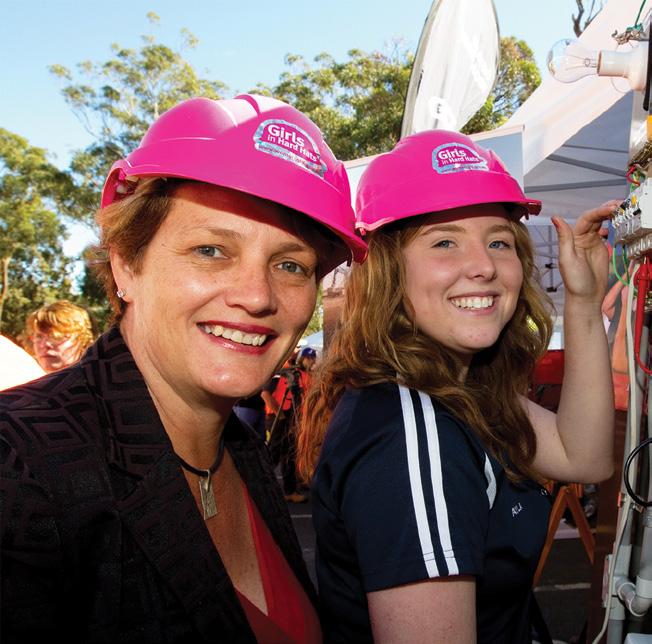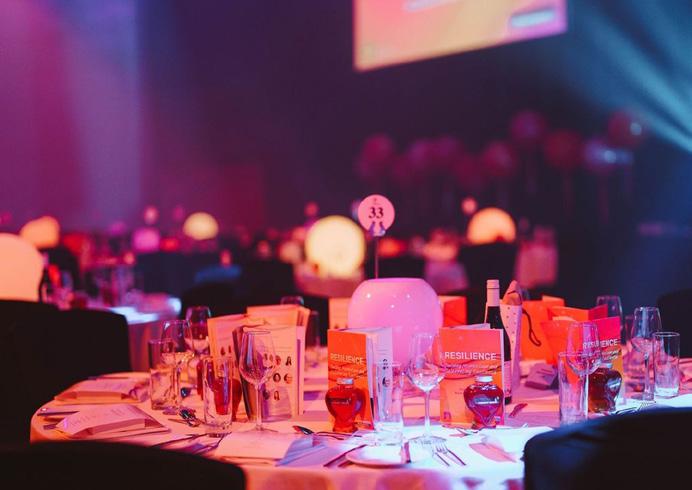
3 minute read
2021 NAWIC Awards for Excellence WA
Until the public as the consumers of trade services switch-on to the intractable 2% —and consider the invisibility of women in male-dominated trades as a problem — change will remain painfully slow.
Until young women themselves, and parents, educators, see and experience the ‘concrete barriers’ that block the pathway for girls and women into male-dominated trades, they will remain switched-off to the issue.
Advertisement
Unless they see that entrenched gender stereotypes, fear and intimidation are blocking young women from pursuing male-dominated trade careers, and that these barriers are also blocking their access to higher paying, secure trade careers, little will change.
How do we get the public and young women to step up on to the ‘bulldozer’. The NAWIC #25by25 features a range of essential actions for change. Initiatives like “Put gender on the tender”, Male Allies Program, try-a-trade, industry lunch box sessions, mentoring, industry plans, events and awards and the increasing media profile are all pushing change along in the right direction.
My PhD research at Griffith University featured the views of young people in schools on the question: why do so few girls and women choose male-dominated trade careers. Overall, most young women had not thought about whether it is a problem that construction and related trades are 98% male dominated.
Young women did say that they would like more hands-on experience of the trades, and more women tradies to come to their schools. Many said comments like girls would consider a career in a male-dominated trade if it was “more open to us.”
The comments of the young women are consistent with other research and experience showing that myths and stereotypes about trades are common:
⋅“Those trades are for the guys who aren’t academic.” ⋅ “In these trades the guys get around with their bum-cracks hanging out.” ⋅ “Only one or two girls do it, so you feel intimidated to try it.” ⋅ “Our teachers didn’t even tell us about the try-a-trade session, only the boys went.”
While this mind-set and gender stereotypes prevail, very few young women think about pursuing a male-dominated trade nor are they joining in a call for change. Great young tradeswomen are mentors, but with only a handful of them in any given region, their capacity to reach out widely to young women is limited. There’s no high profile social media action by young women.
Dr Karen Struthers at an industry ‘try-a- trade’ event to promote women into trades
The data showing the chronic shortage of apprentices and trade-qualified construction workers is helping to build the case for #25by2025 in industry and government.
The data showing the lower wages in female dominated trades and negative impact of the gender pay gap on women is also compelling and winning over advocates to join the call for change.
The most compelling case for change will come when young women themselves switch-on, get the facts, and join experienced adult advocates as agents of change.
This will require large scale, intensive and creative communications strategies. Defence Australia recruitment have been making the male-dominated jobs cool for women with their investment in advertising.
It’s unlikely that Kylie Minogue will dust off her overalls again as Charlene the mechanic in Neighbours and make it cool to be a tradie in a male dominated industry — but wouldn’t that help to move things along.
For those of us who are on a mission to advance the economic security and personal safety of girls and women, that bulldozer is moving way too slowly. Dr Karen Struthers
Adjunct Research Fellow Department of Health Sciences and Social Work Board Member, Menzies Health Institute Queensland Griffith University, Logan


2021 NAWIC awards for excellence











